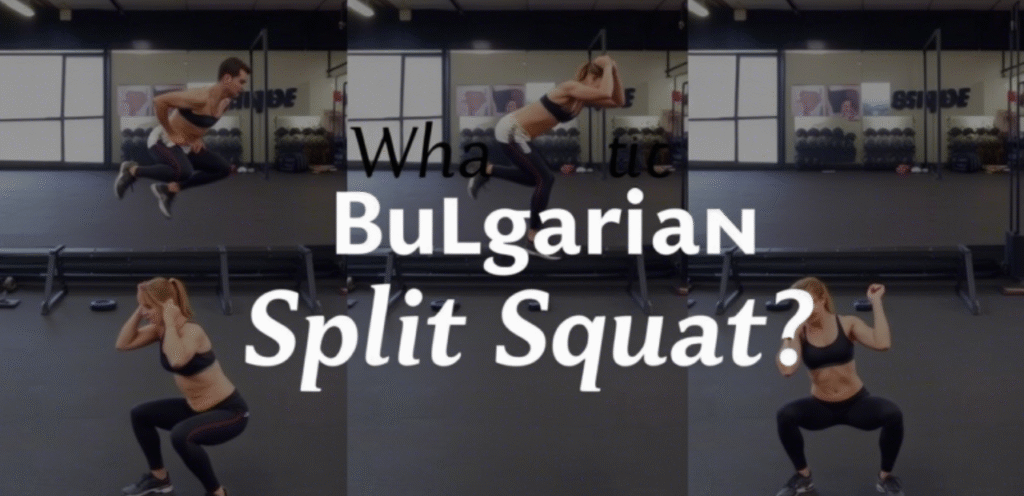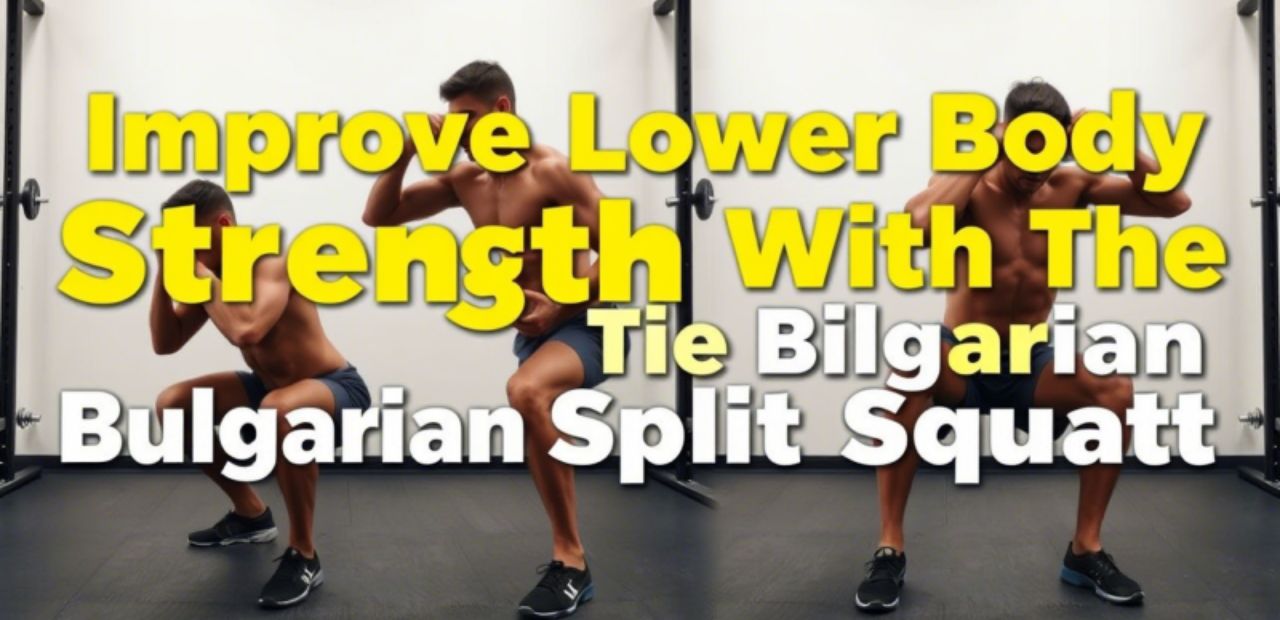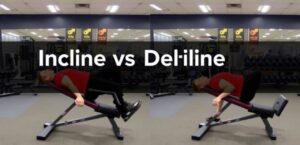When it comes to building lower body strength, the Bulgarian split squat is an essential exercise that should be incorporated into your workout routine. Whether you’re an athlete looking to enhance performance or someone aiming to tone and strengthen your legs, the Bulgarian split squat offers a variety of benefits. In this article, we’ll delve into how this exercise helps improve lower body strength and why it’s a must-try for anyone serious about fitness.
What Is the Bulgarian Split Squat?

The Bulgarian split squat is a single-leg exercise that targets the major muscles of the lower body, including the quadriceps, hamstrings, glutes, and calves. This exercise is performed by placing one foot behind you on a bench or elevated surface, while the other foot remains on the ground. From this position, you squat down into a lunge while keeping your torso upright.
Why Should You Incorporate the Bulgarian Split Squat Into Your Routine?
There are several reasons why the Bulgarian split squat is an excellent choice for improving lower body strength:
- Targeted Leg Development
The Bulgarian split squat isolates each leg, allowing for a more balanced strength development. Unlike traditional squats, which can sometimes let your stronger leg dominate, the Bulgarian split squat forces each leg to work independently, promoting even muscle growth. - Improved Balance and Stability
By performing the movement on one leg at a time, the Bulgarian split squat challenges your balance and stability. This helps improve coordination and strengthens the stabilizing muscles in your legs, ankles, and core, which are essential for overall body strength and injury prevention. - Enhanced Mobility and Flexibility
The exercise requires deep bending of the knees and hips, helping improve joint mobility. The hip flexors and the lower back are stretched while the quads and hamstrings are strengthened, enhancing flexibility over time. - Reduced Risk of Injury
When done correctly, Bulgarian split squats help promote muscular symmetry and proper movement patterns, which can reduce the likelihood of imbalances or injuries that can occur with improper form during other lower-body exercises. - Convenience and Accessibility
The Bulgarian split squat doesn’t require a lot of equipment – just a bench, chair, or elevated surface to rest your back foot on. It’s a great exercise for home workouts, making it a convenient option for those who don’t have access to a gym.
How to Perform the Bulgarian Split Squat Correctly
- Start with Proper Setup
- Stand a few feet in front of a bench or elevated surface.
- Place one foot on the bench behind you, ensuring your back leg is bent at a 90-degree angle when you descend into the squat.
- Your front foot should be flat on the ground with your knee aligned over your toes.
- Lower Your Body
- Slowly lower your hips by bending your front knee, keeping your torso upright. Your back knee should move toward the floor while maintaining a straight line between your hips and shoulders.
- Go as low as you can without compromising form, ideally until your front thigh is parallel to the ground.
- Return to the Starting Position
- Push through your front foot to return to the starting position, straightening your leg and keeping your back foot planted on the bench.
- Repeat and Switch Legs
- Perform the desired number of repetitions on one leg, then switch to the other leg.
Common Mistakes to Avoid
To get the most out of the Bulgarian split squat and avoid injuries, be aware of these common mistakes:
- Knee Position: Make sure your front knee doesn’t extend beyond your toes. It should remain aligned with your toes as you lower your body.
- Torso Leaning Forward: Keep your torso upright throughout the exercise. Leaning forward can strain your lower back and diminish the effectiveness of the exercise.
- Insufficient Range of Motion: To fully engage the muscles, make sure you lower your body to a depth where your thigh is parallel to the ground or slightly below.
- Back Foot Too High: If your back foot is placed too high on the bench, it can throw off your balance and reduce the stability of the exercise. Find a comfortable height where you can maintain control.
Progressions and Variations
Once you’ve mastered the standard Bulgarian split squat, there are a few ways to increase the intensity:
- Weighted Bulgarian Split Squat: Add dumbbells or a barbell to increase resistance and challenge your muscles further.
- Jumping Bulgarian Split Squat: For a more dynamic variation, you can perform the Bulgarian split squat with a jump to add a plyometric element to the exercise.
- Elevated Bulgarian Split Squat: Increase the height of the bench or platform for a greater range of motion and a deeper stretch.
How Often Should You Do the Bulgarian Split Squat?
The Bulgarian split squat can be done 2–3 times a week as part of your lower body workout. It’s ideal to include this exercise in a balanced workout routine that targets all the major muscle groups, with adequate rest between sessions.
Conclusion: Strengthen Your Lower Body with the Bulgarian Split Squat
Incorporating the Bulgarian split squat into your fitness routine can significantly enhance your lower body strength, balance, and flexibility. This single-leg exercise is simple to perform but incredibly effective, helping you target key muscles in your legs while improving your overall stability. Whether you’re a beginner or an advanced athlete, the Bulgarian split squat is an exercise that delivers results.
So, what are you waiting for? Start including the Bulgarian split squat in your next workout and watch your lower body strength improve!

Emily Rose Johnson is a passionate writer with a knack for crafting engaging content. She specializes in communication strategies, digital marketing, and creative storytelling.









